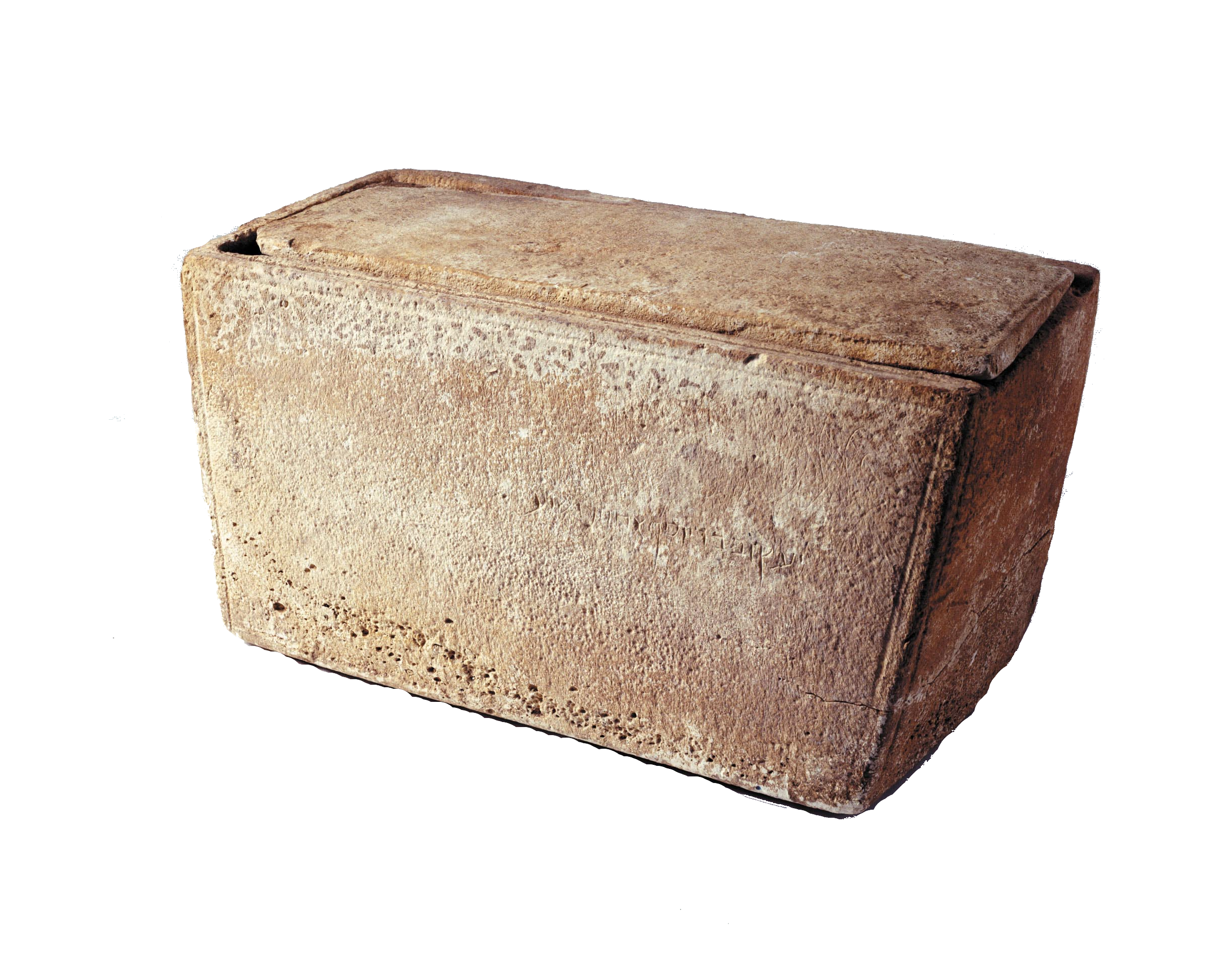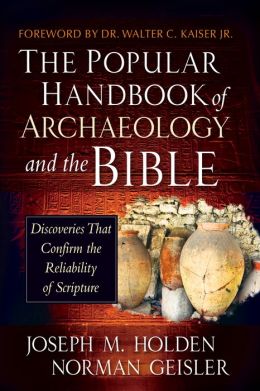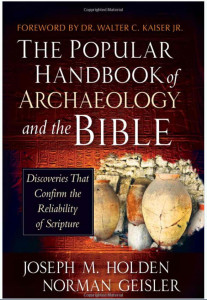Is Jesus’ Hometown (Nazareth) a Myth?
Joseph M. Holden, Ph.D.
For the past 2000 years first-century Nazareth was unquestionably considered the historic hometown of Jesus. The gospels make it abundantly clear that Jesus was “of Nazareth” (Jn. 1:45; Jn 19:19; Mk. 1:24; Lk. 18:27). However, Rene Salm has challenged the historical Nazareth in his The Myth of Nazareth: The Invented Town of Jesus (American Atheist Press, 2008). According to his view, ancient Nazareth did not emerge prior to A.D. 70, and the settlement of Nazareth did not exist earlier than the second-century A.D. long after Christ’s crucifixion. To substantiate these claims, Salm appeals to, among other things: 1) late dating Roman and Byzantine artifacts (e.g oil lamps), 2) the Gospel of Luke which tells us that Jesus’ hometown was Capernaum, not Nazareth, 3) “problematic” biblical passages (e.g. Mt. 2:23, “And he went and lived in a city called Nazareth, that what was spoken by the prophets might be fulfilled, ‘He shall be called a Nazarene.’” ESV) that have no prophetic reference in the Jewish Scriptures, and 4) that Josephus and the Jewish Talmud do not mention Nazareth in their lists of Galilean cities. However, there are several reasons why Salm’s argument against Nazareth should be rejected.
First, there has been little archaeological work completed in the Nazareth area since most of the ancient city lies under the modern city of Nazareth (ca. 60,000 population). The sparse materials and current cumulative data should not be stretched into Nazareth’s non-existence since the alleged absence of material data and the presence of later Roman and Byzantine evidence is not “contradictory” evidence that disproves Nazareth’s first-century existence. Such a conclusion is tantamount to arguing that since we have not found the Ark of the Covenant or Noah’s Ark that the temple never existed or that the flood never occurred. In other words, this sort of thinking commits the logical fallacy of arguing from silence! Besides, the archaeological data from excavations in the Nazareth area demonstrate that Nazareth was a small (60 acre) agricultural village, had a population of about 300-500 people, had several rolling-stone tombs in the vicinity (like the tomb of Jesus) used up until the destruction of Jerusalem in A.D. 70, and a third-century A.D. Jewish synagogue which was probably built over the top of an earlier synagogue that was familiar to Jesus. To be sure, it is not uncommon for a later synagogue to be built over an earlier synagogue structure as was accomplished at Capernaum. In addition, an assortment of pottery has been found in the Nazareth area dating from 900 B.C. to A.D. 640, suggesting the area was occupied at various times over a 1500-year period. Among these finds, there is no evidence that contradicts the view that Nazareth was a small historic village during the time of Jesus. Even if there was no material data uncovered at Nazareth from the early first-century A.D., it does not eliminate Nazareth as a historical city. Why? Salm seems to forget that Nazareth was a small village (about 3 miles south of the thriving city of Sepphoris) with a small population. Further, it is not uncommon that Nazareth’s location moved somewhat over time. It is unrealistic to expect such a small agricultural village to leave massive amounts of material behind as do large cities like Beth Shan and Jerusalem. To demand such evidence from Nazareth would be unrealistic. In fact, it is not uncommon for small villages to just disappear over time since later Roman and modern building projects have been known to erase traces of earlier settlements altogether. Current archaeology has not yet revealed the exact place of first-century Nazareth. This is hardly proof that Nazareth did not exist! The same is true of other small villages like Chorazin, whose archaeological data is mostly Byzantine. Though Chorazin could be located nearby the current location. We must be reminded that only 1% of the archaeological sites have been excavated, and to treat the Galilee region (or the Nazareth area) as “fully excavated” is misguided and incorrect since much more is yet to be learned. The jury is still out on the matter of first-century Nazareth’s exact location.
Second, Salm appears to be arguing against traditions and common lay assumptions, as well as the current Nazareth Village that has been reconstructed, and has not offered any material evidence that disproves first-century Nazareth’s existence. At best his arguments demonstrate that we don’t know the exact location of Nazareth, and that certain archaeological reports conflict on occasion, or that some overzealous Christians have overstated their case for Nazareth at times. However, none of this demonstrates that Nazareth is a myth. It only serves to show us that interpretations may conflict at times as is the case in all discipline that call for human interpretation (e.g. science, theology, etc). In fact, I don’t know of any reputable archaeologist today that is dogmatically certain of the exact location of Nazareth. As for the current Nazareth Village constructed for tourists to gain an understanding of first-century life in Jesus’ hometown, it seems to offer a accurate snapshot of what Nazareth was like without making the claim that the location of the current Nazareth Village was the exact same location of Jesus’ hometown. Illustrations of terraced farming, replica synagogue, meals, carpenter’s workshop, and models dressed in authentic apparel offer a helpful and realistic portrait of life in Jesus’ Nazareth. Unlike the examples offered in the Nazareth Village tour which are grounded in real origin science (archaeology) and historic narrative descriptions, Salm’s argument against Nazareth is without positive archaeological or historical grounding whatsoever.
Third, the location of Sepphoris in relation to Nazareth is consistent with the social and economic milieu of Jesus’ day. Sepphoris, rebuilt in 4 B.C. by the Tetrarch of Galilee, Herod Antipas, was located about an hour’s walk from modern day Nazareth. This is strong evidence that villages like Nazareth settled within a short distance from this major hub, implying they were not “isolated” from the rest of the Galilee. The labor force (masons and carpenters) most likely could not afford, or did not need, to live in big opulent cities so they settled in nearby villages. Since Joseph and Jesus were masons/carpenters, with no indication that they were wealthy, it would make sense that they settled close by Sepphoris. For example, the small southern California cities of Temecula and Murrieta are affordable bedroom communities that feed the labor force of Los Angeles and San Diego! Though we must not take this to mean that Nazareth was a remote and isolated stop on the way to the city. There is evidence of first-century agricultural infrastructure in Nazareth such as grape and olive presses, farming, vinyards, some stone masonry, the sparse remains of a home (mud, stone, wood, and vegetation), and a nearby highway system connecting the port city of Caesarea Maritima to Tiberias. [1] All of these remains imply a self-sustaining first-century community intricately connected with the rest of northern Israel.
Fourth, Salm mistakenly rejects Matthew 2:23 due to its lack of specific reference among the prophetic books of the Old Testament for several reasons. First, Matthew did not say a single prophet made the statement, but rather it was of the prophets (plural). Meaning that Matthew was not quoting any specific prophet but was instead referring to the general consensus among the prophets that Jesus would be called a “Nazarene.” The fulfillment of this title can be understood in several ways. For example, the prophets said the Messiah would be despised and rejected (Isa. 53:3; Dan. 9:26; Zech. 12:10) much like the way Nazareth was despised during the early first-century (Jn. 1:46; 7:41, 52); 2) though Jesus never took the vow of the Nazarite (the word is spelled differently than Nazareth), He fulfilled it by perfectly keeping the Law by separating Himself to the Lord which was the essence of the Nazarite vow (Num. 6:2; Judg. 13:5); 3) others have indicated that the Hebrew word netzer (meaning “branch”) is the word from which Nazareth was named (since it sounds similar). Several prophets mentioned the “Branch” as being a title of the Messiah (Isa. 11:1; Jer. 23:5; 33:15; Zech 3:8; 6:12). The best solution is to accept Matthew’s statement at face value, namely, Matthew saw the fulfillment of Isaiah’s prophecy when Jesus and his family took residence in Nazareth (Mt. 21:11); 4) John records Phillip’s identification of “Jesus of Nazareth” as the fulfillment of what Moses and the prophets wrote (Jn. 1:45). Nathanial affirms its despised reputation and assumes Nazareth is a historical village when he replies, “Can anything good come out of Nazareth?” (Jn. 1:46, ESV).
Fifth, Salm ignores the numerous independent statements in the New Testament that identify Jesus with Nazareth. First, at his crucifixion Pontius Pilate placed a government-authorized sign (titulus) above Jesus’ head that read, “Jesus of Nazareth…” (Jn. 19:19). It is worthy of note that the religious leaders did not dispute truthfulness of Jesus’ hometown (“Nazareth”) written on the placard when they petitioned Pilate to change the writing, but only challenged His claim to be “the King of the Jews” (Jn. 19:20-22)! Second, Jesus was rejected at the synagogue in Nazareth (Lk. 4:16-30). It is inconsistent to affirm the historicity of Jesus and the synagogue and yet assign Nazareth to myth since it is so often associated with the historical Jesus as it is here. Third, the New Testament writers often referred to “Jesus of Nazareth” (Mk. 1:24; Lk. 18:27) and those among His early church were identified as the “Nazarene sect” (Acts 24:5). Fourth, even the man with an unclean demon acknowledged that Jesus was “of Nazareth” (Lk. 4:33-34). This would have been the perfect opportunity for the demon to challenge the moral character of Jesus by catching Him in a lie about his hometown. Instead, the demon is forced to confirm the truth about His holiness, deity, authority, identity, and place of residence (Lk. 4:34). Never is Jesus identified with any other city such as “Jesus of Caesarea”, “Jesus of Capernaum”, “Jesus of Bethlehem”, or “Jesus of Jerusalem”, only “Jesus of Nazareth”. To conclude otherwise is to overlook the strong and obvious textual connection between Jesus and his hometown of Nazareth.
Sixth, the absence of historical notation among early literature (Josephus and Talmud) does not prove that Nazareth is a myth. Lack of identification does not mean lack of existence, it’s a logical fallacy to argue from silence! For many years, the Babylonian king, Belshazzar, mentioned in Daniel 5 was considered by critics to be a mythical interpolation in the text since he was missing from all Babylonian king lists. However, he was later discovered on the Nabonidus Cylinder to be the son and co-regent of Babylonian king, Nabonidus. Therefore, sound logic and previous experience must limit Salm’s claim of Nazareth’s omission in previous lists to: “the lack of notation in early writers is consistent with the view that Nazareth is a myth.” There are plausible reasons why Nazareth is not found in Josephus and the Talmud’s list of Galilean locations. First, it is possible that Josephus and the Talmud omit it because the lists are not intended to be exhaustive. Second, it may be because Nazareth (due to its despised reputation and size) was such an insignificant village at the time it warranted no mention. Third, by the time Josephus wrote his list of Galilean cities Nazareth may have been known by another name or was not occupied in the late first-century A.D. What is more, Jewish religious leaders may have refrained from listing Nazareth out of disdain for Jesus and His claims to be the Messiah. None of these reasons preclude Nazareth from being the historic village of Jesus.
Seventh, Salm’s theory forgets that Old and New Testament writers always layered their narratives over real geographical locations. Never have we discovered otherwise. Luke is a prime example of exact geographical descriptions to aid his foreign readers in understanding the geography of Palestine. In 1:26, Luke identifies the location as “a city of Galilee named Nazareth.” It is strange hermeneutical practice to accept the historicity of the Galilee region (as Salm apparently does) and reject the existence of Nazareth located within it. Each time Nazareth and Jesus are mentioned they are so often coupled together in a non-mythical tone. Salm often asserts that instead of Nazareth being Jesus’ hometown, the Scriptures place Jesus in his home at Capernaum. However, this notion is fraught with problems, the most crucial of them is that Salm, being either unaware or by simply ignoring, the same grammatical coupling is associated with Capernaum as well, “Capernaum, a city of Galilee” (Lk. 4:31). Moreover, Matthew 4:12-17 clearly describes that Jesus “leaving Nazareth he went and lived in Capernaum by the sea, in the territory of Zebulun and Naphtali” to begin His ministry. Salm is correct when he says that Jesus lived in Capernaum, but this is only true after he left Nazareth (Lk. 3:23 cf. Lk. 4:14-37). It makes no sense (hermeneutically or logically) to assert that Jesus left a mythical city (Nazareth) to live in a historical one (Capernaum)!
Eighth, Salm’s theory favors the interpretations of liberal biblical scholarship without questioning their philosophical assumptions or methodology and does not seriously interact with conservative evangelical scholarship on the matter. Most notable is Salm’s unwarranted rejection of the reliability of the biblical text. There is simply no reason to reject the integrity of the Gospel records that are supported by credible eyewitnesses and thousands of early manuscripts. [2] Salm admits that the purpose ofThe Myth of Nazareth is only the foundational step in deconstructing classical Christianity in order to offer a “new account” of Christian origins that will rely heavily on “investigating suppressed evidence of Gnostic, Judean, and Essene roots of Christianity.” To replace credible and ancient eyewitness testimony with modern critical scholarship that is 2000 years removed from the events recorded in the biblical text is not only unwise, it is bad scholarship on any level!
Salm’s argument against Nazareth can only succeed if he brings to light archaeological evidence that contradicts the biblical testimony of first-century Nazareth. However, thus far it appears he has only revealed his bias against the reliability of the Scriptures and inerrancy, offered arguments from silence, employed minimalist New Testament interpretation, offered a critique of over-stated dogmatic claims by some Christians, and the conflicting interpretations of archaeological data. None of these warrant a change of mind from what has been generally accepted for nearly 2000 years – namely, that Nazareth is the historical town of Jesus.
Copyright by Joseph M. Holden 2012. All Rights Reserved.
[1] Craig A. Evans, Jesus and His World: The Archaeological Evidence (Westminster John Knox Press, 2012), 13-14. See Bellarmino Bagatti, Excavations in Nazareth: Vol. 1, From the Beginning till the XII Century (2 Vols). (Publications of the Studium Biblicum Franciscanum 17. Jerusalem: Franciscan Printing Press, 1969), 174-218.
[2] See Bruce M. Metzger, The Transmission of the New Testament Text: Its Transmission, Corruption and Restoration; Norman Geisler and William E. Nix, From God to Us: How We Got Our Bible (Revised & Expanded) 2012; and Norman Geisler and Joseph Holden, A Popular Survey of Archaeology and the Bible – Harvest House, 2013; Norman Geisler and Frank Turek,I Don’t Have Enough Faith to Be an Atheist).




